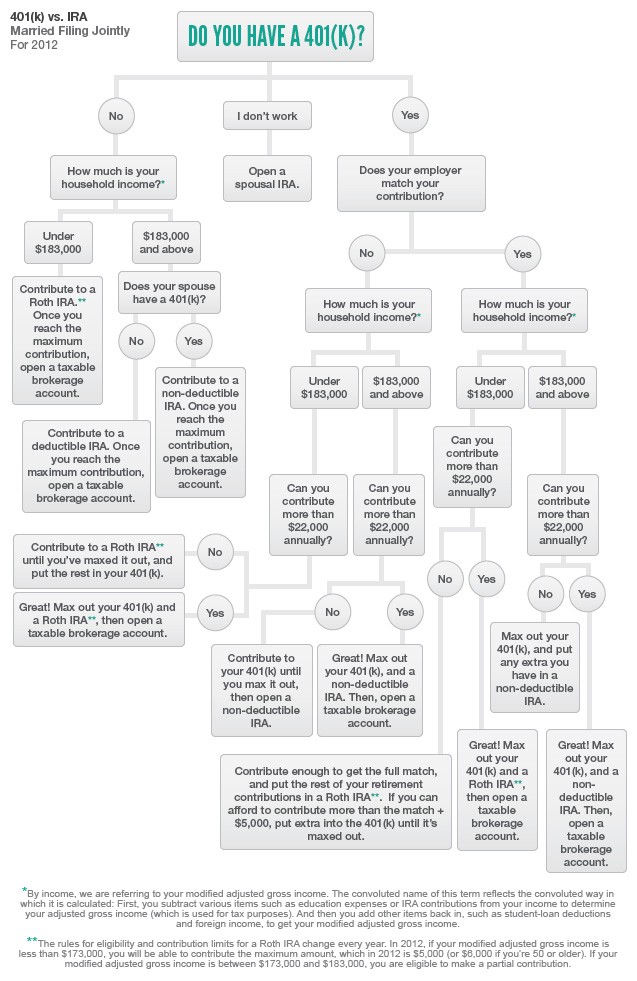What are my 401(k) distribution options Wells Fargo
Post on: 15 Май, 2015 No Comment

Take Control of Your Retirement Savings
If you’re changing jobs or retiring, one of the most important decisions you may face is how to handle the money you’ve worked hard to earn and save in your employer-sponsored retirement plans. When leaving a company, you generally have four options for your 401(k) savings:
Decide which option is right for you:
Roll over your retirement savings directly into an Individual Retirement Account (IRA)
If you’re changing jobs or retiring, rolling over to an Individual Retirement Account (IRA) may be a way to get more flexibility in how you manage your savings. IRAs are another type of retirement account, which offer many of the same tax advantages as a 401(k). There are two types: Traditional IRAs and Roth IRAs. An IRA lets you decide how you want to manage your investments, whether that’s using an online account with which you can choose investments on your own or working with a professional who can help you choose investments.
- Investments retain tax-favored growth potential.
- Access to a variety of investment choices, which allows better diversification.
- Ability to maintain your retirement savings along with your other financial accounts.
- Certain circumstances allow penalty-free IRA distributions before age 59 1/2.
- Transaction and account maintenance fees may apply.
- Required Minimum Distributions (RMDs) must be taken by April 1 following the year you reach age 70 1/2 to avoid IRS penalties.
- Withdrawals prior to age 59 1/2 subject to an IRS 10% early-withdrawal penalty and ordinary income taxes unless an exception applies.
- Creditor protection may not be provided.
Wells Fargo offers IRAs along with a variety of ways to manage your savings. Learn more about our options .
Note: If you choose this option, you’ll want to research the different types of accounts and where you would like to open an IRA, start the process of moving your savings over to your new IRA, periodically review your investments, and take RMDs (once you reach age 70 1/2).
Meet Caroline
Leave your retirement savings in your former employer’s retirement plan
With this option, you don’t need to make an immediate decision about where to move your savings, and your money continues its tax-favored growth potential until you choose to withdraw it. Your account will remain subject to your former employer’s plan rules, including investment choices, withdrawal options, and loan availability.
- No immediate action required of you.
- Investments keep their tax-favored growth potential.
- The ability to leave your savings in their current investments.
- Future withdrawals may avoid the 10% IRS early-withdrawal penalty if you separate from service after reaching age 55.
- Retirement savings typically protected from creditors’ claims.

- Option not available to everyone (eligibility determined by former employer).
- Savings left with various employers can create account maintenance complexities.
- Former employer’s plan will determine:
- When and how you access your retirement savings.
- Which investment options are available to you.
If you choose this option, remember to periodically review your investments, carefully track associated paperwork and documents, and take RMDs (once you reach age 70½) from each of your retirement accounts.
Meet Monique
Monique recently opened her own business and doesn’t have time to worry about her 401(k). She’s leaving her retirement savings in her former employer’s plan.
Move your retirement savings directly into your new employer’s retirement plan
If you’re joining a new company, moving your retirement savings directly into your new employer’s plan maintains your money’s tax-favored growth potential. This option may be appropriate if you’d like to keep your retirement savings together, and if you’re satisfied with your new plan’s features and investment choices. Check with your new employer to determine if this option is available to you, as some retirement plans don’t allow direct transfers.
- Investments retain tax-favored growth potential.
- Retirement savings kept in one account.
- Required Minimum Distributions (RMDs) may be delayed beyond age 70 1/2 if you’re still working.
- Retirement savings are typically protected from creditors’ claims.
- Option not available to everyone (eligibility determined by new employer’s plan).
- Waiting period for enrolling in new employer’s plan may apply.
- New employer’s plan will determine:
- When and how you access your retirement savings.
- Which investment options are available to you.
- How your beneficiaries can withdraw their inheritances.
Note: If you choose this option, make sure your new employer will accept a transfer from your old plan, and then contact the new plan provider to get the process started. Also, remember to periodically review your investments, carefully track associated paperwork and documents, and take RMDs (once you reach age 70 1/2, except for 5% owners of companies; there are no RMDs from employer retirement plans for those still working there) from each of your retirement accounts.
Meet Robert
Withdraw your money as cash
While the option of withdrawing all your money at once may sound attractive at first, carefully consider the financial consequences before making such a decision. The money you withdraw will be taxable, and as such, subject to a mandatory 20% federal tax withholding. In addition, the money is also subject to potential early-withdrawal penalties. Before making this choice, use our online early-withdrawal costs calculator .
- Retirement savings immediately available (after tax withholding and potential early-withdrawal penalties).
- Cash can be used however you wish.
- Mandatory 20% federal tax withholding automatically deducted from the taxable amount you withdraw.
- Mandatory state tax withholding may apply.
- Investment loses tax-advantaged growth potential.
- Retirement may be delayed, or the amount you’ll have to live on later may be reduced.
- Withdrawals prior to age 59 1/2 may be subject to an IRS 10% early-withdrawal penalty and will be taxed as ordinary income.
Note: If you must choose this option, you may want to consider withdrawing only a portion of your savings, while keeping the remainder saved in a tax-favored account, such as an IRA. This can help reduce your tax liability, while growing some of your savings for retirement at the same time.














